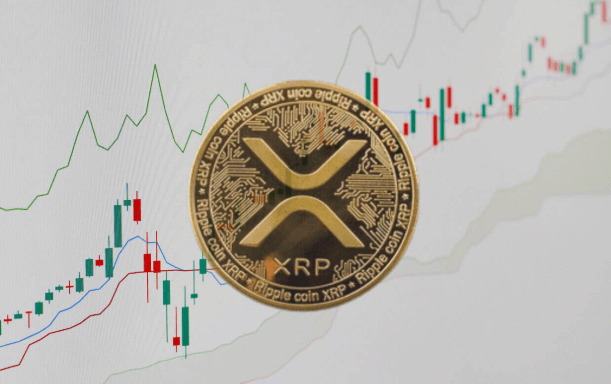XRP Price USDT Movements and Their Impact on the Market

The cryptocurrency market is renowned for its volatility, with price fluctuations often driving investor decisions and influencing the market as a whole. Among the many cryptocurrencies, XRP (Ripple) is one of the most widely traded and influential assets. As traders and investors closely monitor XRP price USDT movements, it’s crucial to understand how these fluctuations affect the broader market, including investor sentiment, trading volume, and overall market trends.
In this article, we will explore the dynamics of XRP price movements against the USDT (Tether) pair and their ripple effects on the entire crypto ecosystem.
Understanding XRP and USDT: The Basics
Before diving into the movements and their implications, it’s important to understand what XRP and USDT are.
What is XRP?
XRP is a digital asset that operates on the Ripple network, a blockchain-based payment platform designed to facilitate fast, low-cost cross-border transactions. Unlike Bitcoin or Ethereum, which are primarily seen as stores of value or platforms for decentralized applications, XRP’s main use case is in the remittance and financial services industry.
What is USDT?
USDT, or Tether, is a stablecoin pegged to the value of the U.S. dollar. It aims to offer the stability of fiat currency while still being able to take advantage of blockchain technology. USDT is widely used in the crypto space as a stable trading pair for various cryptocurrencies, including XRP.
XRP Price USDT Movements Explained
When we discuss XRP price USDT, we are referring to the price of XRP relative to USDT. These price movements can be influenced by several factors, including market demand, investor sentiment, regulatory changes, and broader macroeconomic events. Understanding these fluctuations is crucial for investors and traders looking to maximize profits or minimize losses.
Key Factors Influencing XRP Price USDT Movements
There are multiple factors at play that determine how XRP price USDT will fluctuate. These factors can have a significant impact on both short-term and long-term price movements.
1. Market Sentiment
The cryptocurrency market is heavily driven by sentiment. Positive news, such as new partnerships or regulatory clarity, can lead to bullish movements, whereas negative news, like legal challenges or market downturns, can trigger sell-offs. XRP is no exception, and its price can move drastically based on shifts in investor sentiment.
2. Ripple’s Legal Battle
Ripple’s ongoing legal dispute with the U.S. Securities and Exchange Commission (SEC) is another key driver of XRP’s price volatility. Any updates regarding this case—whether favorable or unfavorable—can lead to significant movements in the XRP price USDT pair. For example, a ruling in favor of Ripple could cause the price of XRP to surge, while a ruling against it could lead to a sharp decline.
3. Market Liquidity and Trading Volume
High liquidity and trading volume are essential for stable price movements in any asset. When large volumes of XRP are bought or sold against USDT, this can lead to rapid price changes. Conversely, low liquidity can cause more significant price swings, especially in smaller, less liquid markets.
4. Broader Cryptocurrency Market Trends
The price movements of XRP can also be influenced by the broader cryptocurrency market. For instance, Bitcoin and Ethereum, being the largest cryptocurrencies by market cap, tend to set the tone for the overall market. A major Bitcoin rally, for example, can drag up the prices of altcoins like XRP, while a market-wide correction can result in losses for all cryptocurrencies.
5. Technological Developments
Innovations within Ripple’s ecosystem—such as updates to the RippleNet payment network, new use cases for XRP, or improvements in transaction speed and scalability—can all contribute to upward price pressure. Technological advancements can increase the adoption of XRP and its value relative to USDT.
The Impact of XRP Price USDT Movements on the Market
1. Investor Sentiment and Confidence
XRP price USDT movements directly affect investor sentiment. A significant surge in XRP’s price often boosts investor confidence, leading to more participants in the market and increased trading activity. On the flip side, a sharp decline in XRP’s price can trigger panic selling, causing a ripple effect across the crypto space.
2. Impact on Other Cryptocurrencies
When XRP experiences significant price movements, it can have a domino effect on other cryptocurrencies. As XRP is a major altcoin, a sudden rise or fall can either attract or repel capital from other altcoins, affecting the overall market capitalization. Investors may see XRP as a leading indicator, using its price movements to anticipate the behavior of other digital assets.
3. Market Liquidity
XRP’s liquidity is important for the entire crypto market, especially in terms of trading volumes. Large XRP price movements can signal a shift in market liquidity, with more or less capital flowing into XRP and other altcoins. When XRP experiences high trading volume, it often leads to increased liquidity across exchanges, creating a more efficient market for all participants.
4. Long-Term Market Trends
Over time, consistent and sustainable price movements in XRP can shape long-term market trends. A prolonged bullish trend in XRP may signify growing institutional interest and broader adoption, which can lead to an overall bullish sentiment in the market. Conversely, if XRP remains under pressure for an extended period, it can signal caution among investors, potentially resulting in a market-wide pullback.
Frequently Asked Questions (FAQs)
1. Why does XRP price fluctuate against USDT?
XRP price fluctuates against USDT due to factors such as market sentiment, trading volume, Ripple’s legal battles, regulatory developments, and broader cryptocurrency market trends. These variables all influence the demand and supply for XRP.
2. How does Ripple’s legal situation affect XRP’s price?
Ripple’s ongoing legal battle with the SEC has caused significant volatility in XRP’s price. Positive developments in the case can drive the price higher, while negative outcomes can lead to a drop in value.
3. What is the correlation between XRP and Bitcoin’s price movements?
XRP and Bitcoin often exhibit similar price trends, as Bitcoin’s movements can influence the broader crypto market, including altcoins like XRP. However, XRP can also experience independent price swings based on its unique factors.
4. How can I trade XRP against USDT?
XRP can be traded against USDT on most major cryptocurrency exchanges. Traders can open positions to buy or sell XRP in relation to USDT based on market trends and price predictions.
5. What are the risks of trading XRP?
Trading XRP, like any cryptocurrency, involves risks due to its volatility. Legal uncertainties, market sentiment shifts, and global events can all impact XRP’s price. Traders should be aware of these risks and employ appropriate risk management strategies.
6. Will XRP’s price continue to rise in the future?
Predicting the future price of XRP is difficult due to the many variables involved. Factors such as the outcome of legal battles, adoption of Ripple’s technology, and overall market conditions will play a role in determining its price trajectory.
Conclusion
The movements of XRP price USDT are essential to watch for anyone invested in the cryptocurrency market. These fluctuations provide insight into the health of the market, investor confidence, and the performance of other altcoins. By understanding the various factors influencing XRP’s price, investors can make informed decisions and navigate the volatility that defines the crypto space.



